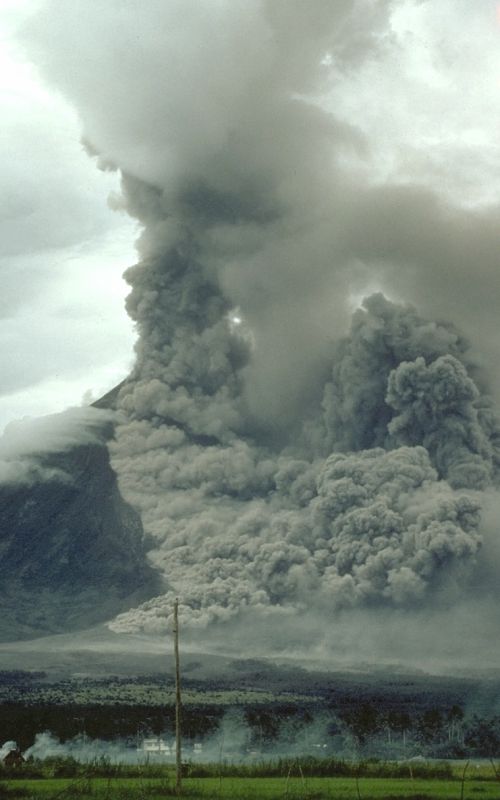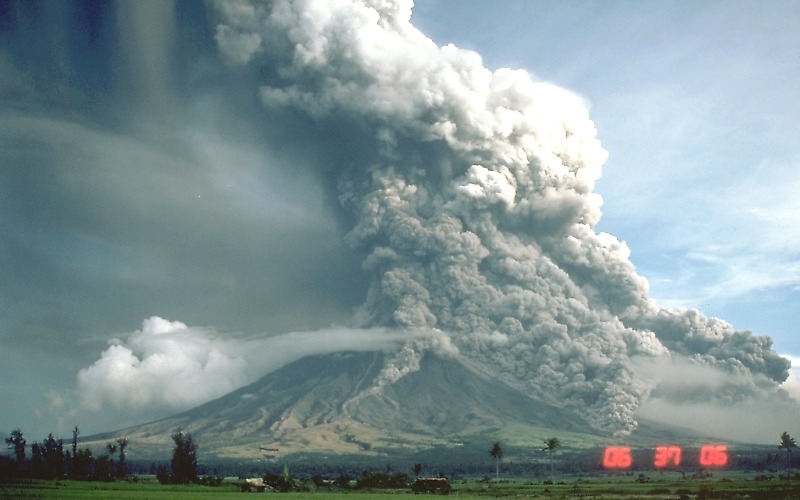- pyroclastic flow
- ALASKA VOLCANO OBSERVATORY GLOSSARY
A dense, hot, chaotic avalanche of rock fragments, gas, and ash that travels rapidly away from an explosive eruption column, down the flanks of the volcano (synonymous with 'ash flow'). Pyroclastic flows move at speeds ranging from 10 to several hundred meters per second and are typically at temperatures between 300 and 800 °C (Blong, 1984). Pyroclastic flows form either by collapse of the eruption column, or by failure of the front of a cooling lava dome. Once these flows are initiated, they may travel distances of several kilometers or more and easily override topographic obstacles in the flow path. A person could not outrun an advancing pyroclastic flow.\GLOSSARY OF VOLCANIC TERMSA dense, hot, dry, high particle concentration mixture of gas and hot rock fragments (ash, pumice, blocks, etc.) that travels along the ground surface, typically at high velocity (generally on the order of hundreds of feet or meters per second; Harris, 2000, p. 1301) away from a volcano. The high speeds of pyroclastic flows are possible because they flow over a thin layer of hot, commonly expanding and escaping gases. Most of the material within a pyroclastic flow is contained within concentrated particle dispersion located at the flow's base (Wilson and Houghton, 2000, p. 545).\USGS PHOTO GLOSSARY OF VOLCANIC TERMSA pyroclastic flow is a ground-hugging avalanche of hot ash, pumice, rock fragments, and volcanic gas that rushes down the side of a volcano as fast as 100 km/hour or more. The temperature within a pyroclastic flow may be greater than 500° C, sufficient to burn and carbonize wood. Once deposited, the ash, pumice, and rock fragments may deform (flatten) and weld together because of the intense heat and the weight of the overlying material.\
 Photograph by C. Newhall on 15 September 1984Pyroclastic flow sweeps down the side of Mayon Volcano, Philippines, during an explosive eruption on 15 September 1984. Note the ground-hugging cloud of ash (lower left) that is billowing from the pyroclastic flow and the eruption column rising from the top of the volcano.\
Photograph by C. Newhall on 15 September 1984Pyroclastic flow sweeps down the side of Mayon Volcano, Philippines, during an explosive eruption on 15 September 1984. Note the ground-hugging cloud of ash (lower left) that is billowing from the pyroclastic flow and the eruption column rising from the top of the volcano.\ Photograph by C. Newhall on 15 September 1984Pyroclastic flows descend the south-eastern flank of Mayon Volcano, Philippines. Maximum height of the eruption column was 15 km above sea level, and volcanic ash fell within about 50 km toward the west. There were no casualties from the 1984 eruption because more than 73,000 people evacuated the danger zones as recommended by scientists of the Philippine Institute of Volcanology and Seismology.
Photograph by C. Newhall on 15 September 1984Pyroclastic flows descend the south-eastern flank of Mayon Volcano, Philippines. Maximum height of the eruption column was 15 km above sea level, and volcanic ash fell within about 50 km toward the west. There were no casualties from the 1984 eruption because more than 73,000 people evacuated the danger zones as recommended by scientists of the Philippine Institute of Volcanology and Seismology.
Glossary of volcanic terms. - University of Wisconsin Oshkosh. G. J. Hudak. 2001.
